Adjustable Calf/Shin Splint Support
Typically Ships in 1-2 weeks
The Mueller Sports Medicine Adjustable Calf/Shin Splint Support features a wraparound design for easy application and removal.

Shin splints is a medical condition that is characterized by pain along the inner edge of the shinbone (tibia). It is technically known as medial tibial stress syndrome. This injury is common among athletes in sports that involve a lot of impact, like running or jumping. Besides runners, dancers and military recruits often experience this injury as well.
Typically, shin splint treatment involves rest, icing, a gradual return to activity and the use of orthotics. Calf sleeves can be worn to apply compression to the injured tissues for pain relief and healing.
Shin splints usually develop over time as an overuse or repetitive stress injury. They are usually not traceable to a specific event, as is usually the case with a traumatic injury.
As stated above, shin splints usually affects athletes in sports that require plenty of running, jumping or other high impact activities. The resulting shocks cause repeated trauma to the connective muscle tissue surrounding the tibia (the larger of the two shin bones). More specifically, it is believed to be the result of traction of the tibialis posterior muscle origin on the interosseous membrane and tibia. This, in turn, produces inflammation of the muscles, tendons and bone tissues surrounding the tibia. The area most frequently affected is the medial border near the junction between the middle and the distal third of the tibia.
Shin splints frequently develop after a sudden increase in the intensity of an athlete’s exercise routine. For example, athletes who suddenly increase their weekly number of training days or the length of training sessions may experience this injury.
In addition to sudden increases in training intensity, the following can increase the risk of experiencing shin splints:
As mentioned above, the primary symptom of shin splints is sharp leg pain, sometimes accompanied by swelling. The pain and swelling occur specifically along the medial (inner) edge of the tibia.
The tibia is the larger of the two bones in the lower leg. It is situated at the front of your lower leg, just ahead of the other bone (the fibula).
Shin splint pain can be either sharp or dull in nature. In addition, the patient may observe the following:
Individuals who experience these symptoms should visit a doctor or sports medicine specialist for a formal examination and diagnosis.
To make a diagnosis, a doctor will conduct a physical examination of the lower leg. He or she will need to identify the precise location of the pain and tenderness the patient is experiencing.
X-rays are not useful, since shin splints do not show up in them. An X-ray would only be indicated if a stress fracture needed to be excluded. It is sometimes difficult to distinguish a shin splint from a stress fracture on an X-ray. In these cases, a bone scan or an MRI scan can help to achieve this.
It is important to identify all the problems that may be causing the pain. If other problems are not detected, it may be difficult to attain complete healing of the shin splints.
Other potential problems that can contribute to the leg pain include tendonitis and stress fractures. Tendonitis in particular can produce pain similar to that caused by shin splints. An MRI scan can help to determine if tendinitis or a stress fracture may also be present.
Stress fractures are small cracks in the tibia produced by the stress of hitting the ground repeatedly at high force.
Another injury that produces symptoms similar to shin splints is chronic exertional compartment syndrome. This is a result of intense exercise that significantly increases intramuscular pressure, resulting in severe leg pain. Contrary to shin splint pain, however, the pain of chronic exertional compartment syndrome tends to recede when the exercise is over. Unlike tendinitis and stress fractures, this condition is usually diagnosed by measuring the pressure inside the leg before and after exercise sessions.
As with many overuse injuries, doctors will first attempt treatment using a conservative (non surgical) approach. This will usually include:
It is important to follow the doctor’s suggestions carefully. Individuals who fail to treat a shin splint injury properly can risk having the condition become permanent.
Surgery is reserved for cases where all other treatment options fail. The surgical procedure is a fasciotomy, whereby an incision is made in the tissue overlying the muscles of the lower part of the leg.
Shin splints is a painful and unpleasant injury. So, it is only natural to ask whether and how it can be prevented in the first place. The normal suggestions are:

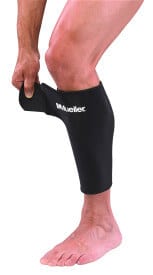
Typically Ships in 1-2 weeks
The Mueller Sports Medicine Adjustable Calf/Shin Splint Support features a wraparound design for easy application and removal.
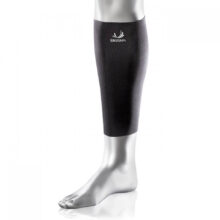
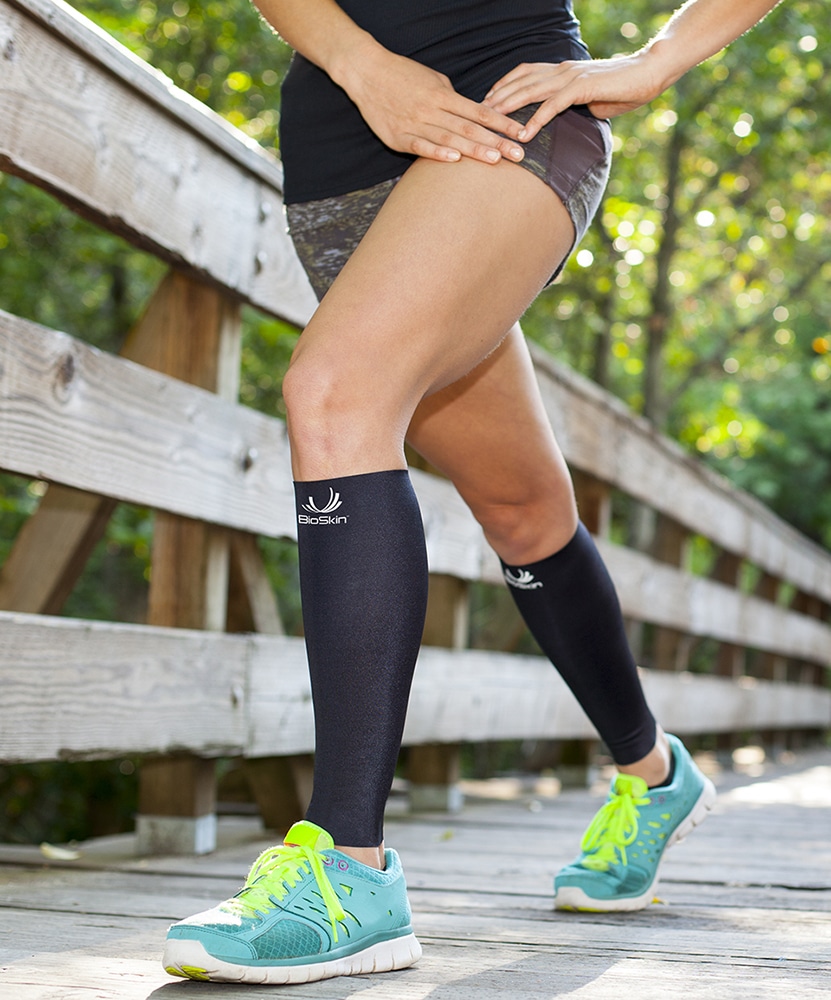
In Stock
The Bio Skin Calf Skin provides optimal compression to ease the pain in injured calves or shins. The thin, breathable material allows perspiration to evaporate to keep you cool. The unique SkinLok™ feature of Bio Skin materials prevents the sleeve from sliding down the leg, even during vigorous activity.
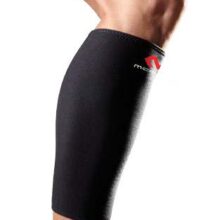
Typically Ships in 3-5 Business Days
The McDavid Calf Sleeve offers contoured, pull-on, latex-free thermal/compression therapy and soft tissue support.
Level 1: Primary Protection – Reducing pain associated with calf strains, shin splints and varicose veins; aids recovery

Out of Stock
Thanks to the SkinLok™ feature, a strategically positioned gel pad and its low profile design, the BioSkin Compression Shin Splint will provide you with unsurpassed relief from the pain of shin splits, calf strains and sprains and other injuries of the lower leg. Made in the USA.

Typically Ships in 3-5 Business Days
McDavid Elite Compression Calf sleeves combines targeted compression and the use of advanced materials to produce an outstanding calf compression sleeve.
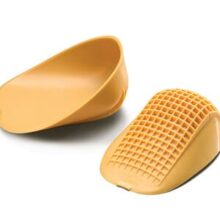
Typically Ships in 1-2 weeks
Mueller Heel Cups reduce heel strike pain and ease the discomfort of shin splints, heel spurs and related conditions. One pair.

In Stock
Mueller Pro Heel Cups are designed to help athletes in high impact sports by reducing the impact of shocks to the heels that may cause foot and knee injuries.